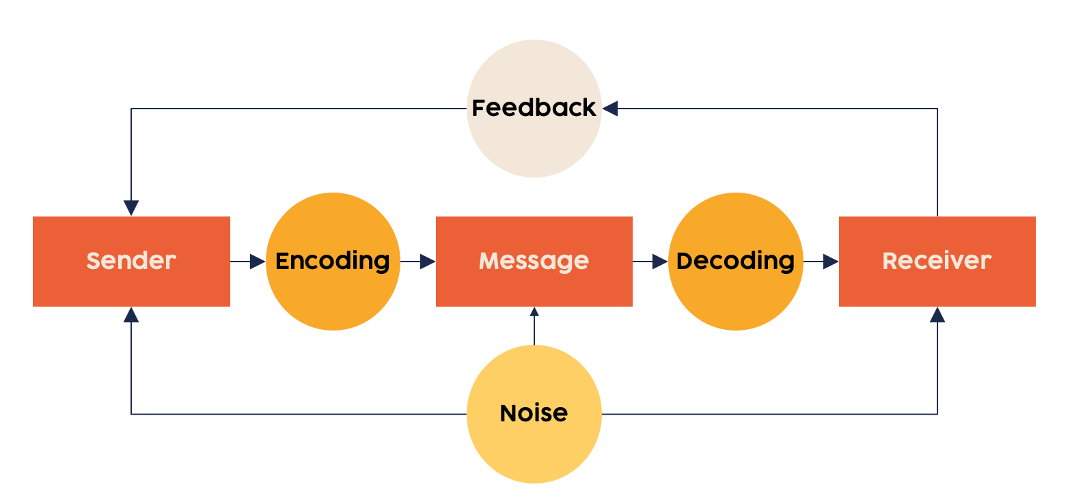The single biggest problem in communication is the illusion it has taken place.
– George Bernard Shaw
From the moment we’re born, we’re hard wired to try and communicate, first by crying, then smiling and mimicking, then through our first words and eventually in writing. Communication is fundamental to our survival and ability to thrive.
In daily life, we need good communication skills to help us build connection and relationships as we share our feelings, wants and needs. Likewise, in leadership we need great communication skills to help us foster belonging, inspire teams and spark engagement.
We’ve been doing it all our lives so it should be easy, right?
The truth, unfortunately, is somewhat different. In fact, good communicators are few and far between and most issues within organisations have their roots in poor communication. Whether that’s misunderstood change programmes, toxic working cultures or problematic relationships between division, somewhere communication will have gone wrong.
What is communication?
Communication is at the heart of thriving working cultures and is a key (if not the key) driver of engagement within teams. Most organisations have internal and external communications teams and budgets set aside for the management of communications. However, experience tells us that the most impactful communication happening within your organisation is 1-2-1.
Two individuals exchanging information and data, interpreting responses, drawing conclusions, trying to connect and sharing experiences – what could go wrong?
Unfortunately, with every communication interaction we have, there are multiple places where opportunities for misunderstanding.
This diagram below illustrates the complexity:

- The source of the communication is the sender – when you speak or send an email you are the source
- The message at the centre is what the sender is trying to convey
- Encoding – this is the construction of your message. Good encoding – appropriate language for example – makes your message clear and therefore reduces the risk of confusion. If you are communicating your message to more than one person, remember that each person might receive it differently.
- Decoding – the process that occurs when the recipient hears or receives your message. Effective decoding happens when you have spoken clearly and demonstrated a level of understanding. Decoding is obstructed by tone, jargon or excessive words
- Feedback (such as verbal and non-verbal language) – helps you interpret your message has been understood
- Noise – is anything that interferes with the process – internally (mental disturbance) or externally (a noisy environment)
The message is exposed to multiple distortions meaning that the Sender and Receiver may have completely different interpretations of one interaction.
How can I communicate effectively?
Fortunately, following a simple tips rules will immediately reduce the likelihood of your communications going awry.
First, practice active and empathetic listening. This sounds simple but is one of the areas in which we see the majority of people struggle. Listening with empathy is crucial in building relationships, fostering trust and belonging. To be truly listened to is an extraordinary experience. We encourage all our coaching clients to enhance their listening skills by being truly present in the conversation and watching out for the barriers to good listening: often our own judgements, beliefs and perspectives.
Next, seek first to understand, then to be understood. When we listen with the intention of fully understanding there is a significant effect on the Sender: they feel valued, you build trust, they increase their self-awareness of what they are trying to convey and most importantly, you both see the situation more clearly.
Work hard to foster connection. The last two years of remote work have brought connection challenges for many teams. For this reason, building rapport and belonging needs to be a key focus for companies in the hybrid world of work. Rapport creates connection, mutual respect and trust and without it the risk of misunderstanding is heightened.
Finally, we need to remember that everyone has different communication preferences and only by communicating can we understand what these are. Our experience suggests that at a 1-2-1, team and organization level there needs to be a Communications Charter that reflects this.
What can my organisation do to improve communication?
Good questions to consider when exploring your organisation’s communications approach include:
- How do we like to brainstorm / tackle problems?
- How do we contact each other out of hours?
- How do we update each other on progress?
- How do we convey important, but not urgent information?
- How do we communicate when our teams are on different working patterns?
- What is our meeting strategy/policy?
- How we do balance collaboration versus deep work time?
- How do we communicate between teams/departments?
- What tools do we have and what tools do we use?
If you’d like support in creating a Communications Charter for your team or organisation or to discuss coaching on communication skills and style, please do get in touch with us at admin@uprisinghumancapital.com.




